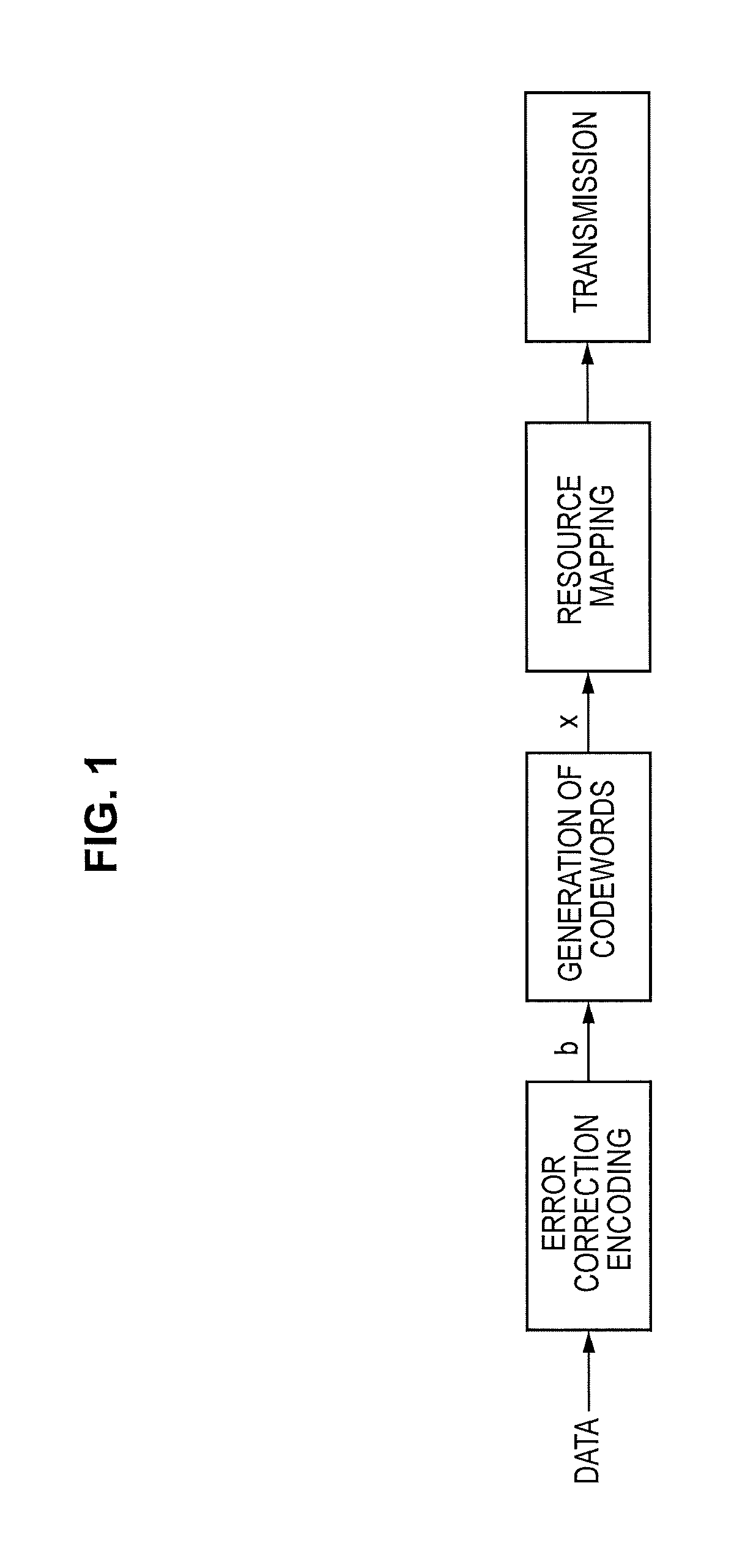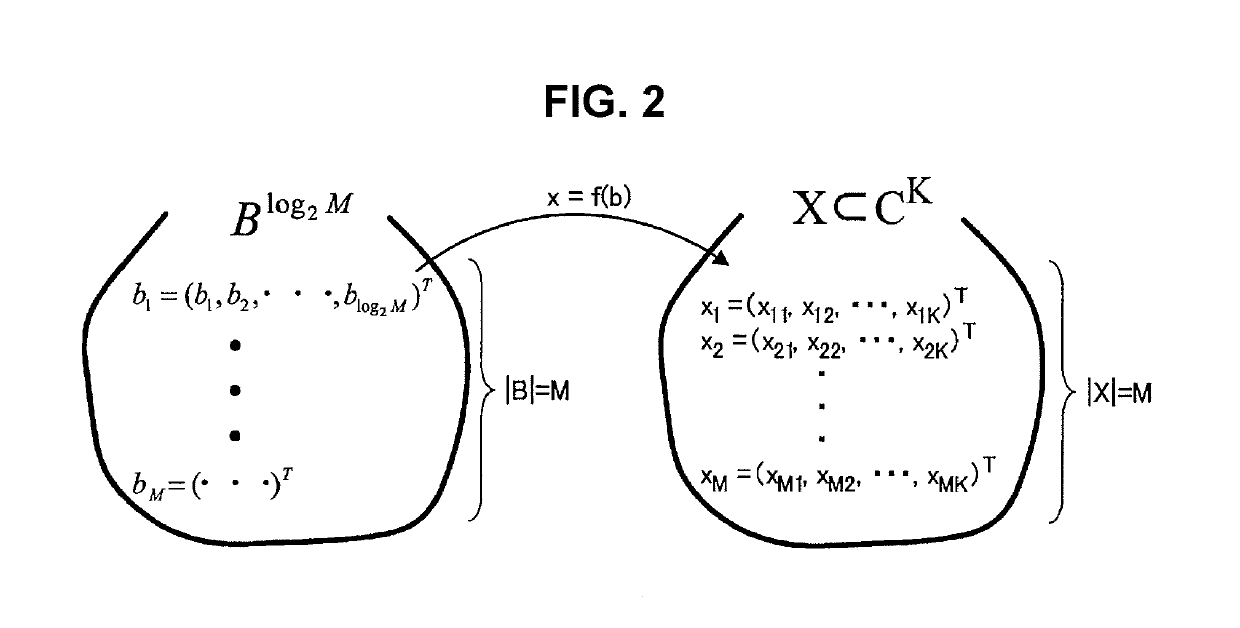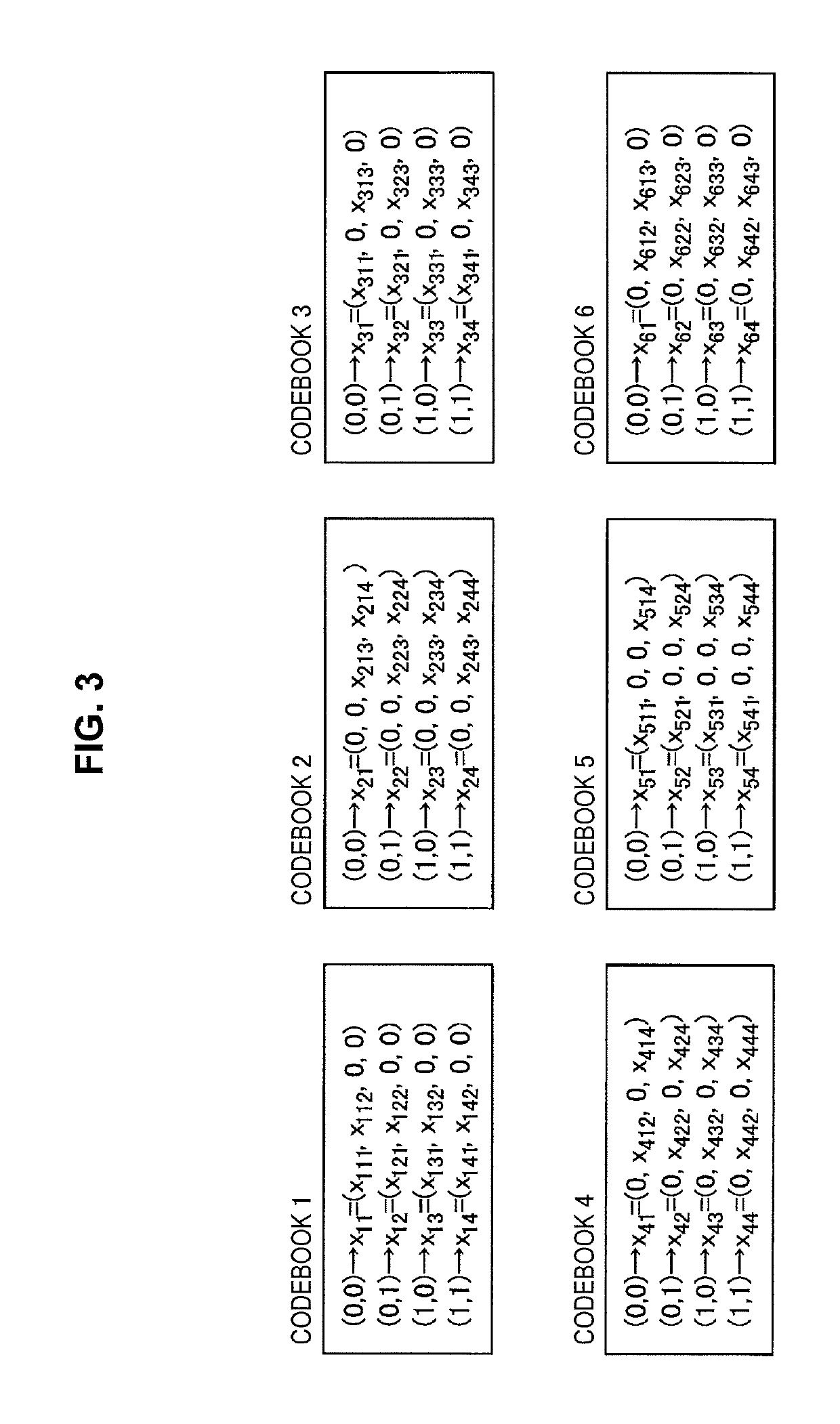Device and method and program for performing radio communication
a radio communication and device technology, applied in the field of devices, methods and programs, can solve the problems of high cost, high cost, and difficulty in the design of a codebook, and achieve the effect of low latency uplink
- Summary
- Abstract
- Description
- Claims
- Application Information
AI Technical Summary
Benefits of technology
Problems solved by technology
Method used
Image
Examples
first example
[0225]FIG. 16 is an explanatory diagram for describing a first example of an overall reception process of the terminal device 200. The reception process of the terminal device 200 includes, for example, performing a Fast Fourier Transform (FFT), resource demapping, SCMA demodulating, layer mapping, and decoding.
second example
[0226]FIG. 17 is an explanatory diagram for describing a second example of an overall reception process of the terminal device 200. The second example is a case example of MIMO. The reception process of the terminal device 200 includes first layer demapping for taking data of each layer from a decoding result of SCMA-modulated data and second layer demapping for receiving each of spatially multiplexed signals in the example illustrated in FIG. 15.
[0227]Specifically, the terminal device 200 (the communication processing unit 243) demaps partially multiplexed signals from radio resources allocated to the terminal device 200 by performing a demapping process on signals received via a plurality of antennas.
[0228]In addition, the terminal device 200 (the communication processing unit 243) demaps various reference signals from radio resources used during the transmission of the reference signals by performing the demapping process on the signals received by the each of the antennas. Accor...
application examples
6. APPLICATION EXAMPLES
[0268]The technology of the present disclosure can be applied to various products. The base station 100 may be realized as any type of evolved node B (eNB), for example, a macro eNB, a small eNB, or the like. A small eNB may be an eNB that covers a smaller cell than a macro cell, such as a pico eNB, a micro eNB, or a home (femto) eNB. Alternatively, the base station 100 may be realized as another type of base station such as a node B or a base transceiver station (BTS). The base station 100 may include a main body that controls radio communication (also referred to as a base station device) and one or more remote radio heads (RRHs) disposed in a different place from the main body. In addition, various types of terminals to be described below may operate as the base station 100 by temporarily or semi-permanently executing the base station function. Furthermore, at least some of constituent elements of the base station 100 may be realized in a base station devic...
PUM
 Login to View More
Login to View More Abstract
Description
Claims
Application Information
 Login to View More
Login to View More - R&D
- Intellectual Property
- Life Sciences
- Materials
- Tech Scout
- Unparalleled Data Quality
- Higher Quality Content
- 60% Fewer Hallucinations
Browse by: Latest US Patents, China's latest patents, Technical Efficacy Thesaurus, Application Domain, Technology Topic, Popular Technical Reports.
© 2025 PatSnap. All rights reserved.Legal|Privacy policy|Modern Slavery Act Transparency Statement|Sitemap|About US| Contact US: help@patsnap.com



